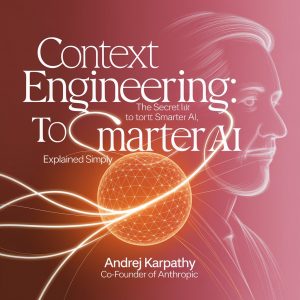The world of software development is undergoing a seismic shift. Gone are the days when building an application required years of dedicated coding expertise, intricate syntax, and late-night debugging sessions. We’re living in an era where artificial intelligence is not just assisting developers but fundamentally changing how we create. Enter Google’s latest experiment: Opal. This intriguing new tool, currently being tested within Google Labs, promises to let you build functional web applications simply by describing what you want – a concept dubbed “vibe-coding.”
Imagine having an idea for a helpful tool, a quirky web app, or a simple utility, and being able to bring it to life without writing a single line of traditional code. That’s the core promise of Opal. It represents Google’s significant investment in making application development accessible to a much broader audience, tapping into the rapidly growing wave of AI-powered creation tools. But what exactly is “vibe-coding,” and how does Opal fit into this evolving tech landscape? Let’s dive in.
What Exactly is “Vibe-Coding”?

The term “vibe-coding” might sound a bit abstract, but it captures a very real shift in how we interact with technology to build things. At its heart, vibe-coding is about translating intent and desired outcomes into functional software using natural language and intuitive interfaces, rather than strict, formal programming languages.
Think about how you might use a tool like ChatGPT or Google’s own Gemini. You describe what you need – perhaps a blog post outline, a summary of a complex topic, or even a piece of creative writing – and the AI generates it based on your prompt. Vibe-coding takes this a step further by applying it to application development. Instead of just generating text, it generates working applications.
This approach aligns perfectly with a vision articulated by prominent AI researchers, like Andrej Karpathy, who have spoken about a future where the underlying code becomes less relevant to the end-user. The focus shifts from the how (the code) to the what (the desired functionality and user experience). Opal aims to embody this by allowing users to “forget that the code even exists,” focusing instead on the concept and the desired output. You provide the “vibe” – the essence of the application – and the AI handles the intricate translation into a functional product. This is a far cry from the traditional coding paradigms that demand deep technical knowledge and precise syntax.
Introducing Google Opal: The Lowdown

So, what exactly is this new tool from Google Labs? Opal is an experimental platform designed to simplify the creation of AI-powered mini web applications. Instead of diving into complex development environments, users can start by simply typing a description of the app they want to build.
Key Features and Functionality:
- Text-to-App Creation: The primary function is generating web applications from natural language prompts. You describe the app’s purpose and features, and Opal’s underlying AI models work to construct it.
- Visual Workflow Editor: This is a crucial component. Once an app is generated, Opal provides an editor that visualizes the entire development process. You can see the sequence of steps, including the prompts used, the AI models involved, and the outputs generated at each stage. This transparency allows users to understand how their app was built and provides a powerful interface for refinement.
- Prompt Editing and Customization: Users aren’t locked into the initial generation. They can dive into the visual workflow, tweak the prompts that drive each step, add new steps, or modify existing ones. This offers a layer of control and customization that bridges the gap between purely generative AI and more traditional development.
- Remixing and Sharing: Opal includes a gallery of existing apps that users can remix and build upon. This fosters a community-driven approach, allowing users to learn from each other and accelerate their own creations. Once built, apps can be published online and shared via links, making it easy to showcase or distribute them.
- Target Audience: While developers can certainly benefit from the rapid prototyping capabilities, Opal’s design clearly aims to empower a wider audience. This includes individuals, small business owners, marketers, educators, and anyone with a digital idea but perhaps lacking the extensive coding background typically required.
Opal is currently available in a public beta, initially focused on users within the United States. This phased rollout through Google Labs allows Google to gather feedback and iterate on the product with real-world user input, a common practice for experimental technologies.
Why Now? The Explosive Growth of No-Code and AI Assistance

Opal isn’t emerging in a vacuum. Its arrival is perfectly timed with several major trends reshaping the technology landscape:
- The No-Code/Low-Code Revolution: The demand for faster, more accessible application development has fueled the explosive growth of no-code and low-code platforms. These tools empower users with little to no traditional programming knowledge to build applications using visual interfaces and pre-built components. Statistics highlight this trend: projections indicate that as much as 65% of app development may utilize low-code platforms by 2024. The global no-code market itself is expected to reach a staggering $45.5 billion by 2025. This surge is driven by businesses seeking agility, efficiency, and the ability to empower “citizen developers” within their organizations.
- AI Integration in Development: Artificial intelligence is rapidly becoming an indispensable part of the software development lifecycle. Tools like GitHub Copilot offer intelligent code suggestions, while AI-powered frameworks are automating testing and deployment processes. These AI-assisted tools are significantly lowering the barrier to entry, making complex tasks more manageable and accelerating development cycles. Google itself leverages AI extensively, and Opal represents a natural extension of this expertise into the application creation space.
- Bridging the Digital Skills Gap: There’s a persistent global shortage of skilled software developers. Simultaneously, the demand for digital solutions across all sectors continues to rise. Tools like Opal address this gap by enabling individuals and organizations without dedicated development teams to create the digital tools they need. It democratizes the ability to solve problems and innovate through technology.
The convergence of these trends – the demand for faster development, the power of AI, and the need to broaden access to digital creation tools – creates the perfect environment for a product like Opal to thrive.
Opal’s Potential: More Than Just a Trend

While “vibe-coding” might sound like a buzzword, tools like Opal have the potential to fundamentally change who can build software and how quickly ideas can be realized.
Democratizing Creation:
Perhaps the most significant impact of Opal is its potential to democratize app creation. Historically, building even a simple web application required specialized knowledge. Opal lowers this barrier dramatically. Anyone with a clear idea and the ability to articulate it in natural language can potentially create a functional application. This opens the door for innovation from untapped sources – the marketer who needs a specific campaign tool, the teacher creating an interactive learning module, or the small business owner wanting a simple customer feedback portal.
Accelerating Prototyping and Innovation:
The speed at which ideas can be translated into working prototypes is a critical factor in innovation. Opal allows for rapid iteration. Instead of spending weeks or months coding a minimum viable product (MVP), users could potentially generate a functional version in hours or days. This rapid feedback loop allows creators to test their ideas in the real world much faster, refine their concepts based on user feedback, and pivot quickly if necessary. This is invaluable for startups, product managers, and anyone involved in launching new digital initiatives.
Bridging the Gap Between Idea and Reality:
Many people have great ideas but lack the technical skills to implement them. Opal acts as a powerful bridge. It allows users to focus on the what – the user experience, the functionality, the problem being solved – rather than getting bogged down in the how of coding. The visual workflow editor further enhances this by providing clarity and control, making the process intuitive even for those unfamiliar with traditional development workflows.
Expanding the Realm of Use Cases:
Beyond generic examples, let’s consider more specific scenarios:
- Small Businesses: Imagine a local bakery wanting a simple online tool for customers to request custom cake quotes. Instead of hiring a developer, they could describe this need to Opal and generate a functional form and database entry system.
- Content Creators: A YouTuber could create a dedicated web app for their fans to submit video ideas or access exclusive content, all described through text prompts.
- Educators: A history teacher could build an interactive timeline application where students can input dates and events, visualized dynamically through Opal.
- Personal Productivity: Anyone could create a custom dashboard to track personal goals, manage tasks using specific AI logic, or build a simple internal tool for their hobby group.
- Marketing Teams: Need a quick landing page generator with specific interactive elements for a campaign? Opal could potentially build this based on a descriptive prompt.
These examples illustrate how Opal could empower individuals and teams across various domains to create tailored digital solutions, boosting productivity and enabling new forms of interaction.
How Opal Works: A Glimpse Under the Hood

While the user experience focuses on simplicity, understanding the underlying mechanics can be fascinating. Opal leverages Google’s advanced AI models and infrastructure to achieve its functionality:
- Input: The user begins by providing a natural language description of the desired application. This prompt needs to be clear enough to convey the core purpose and features.
- Processing: Opal takes this prompt and uses a series of sophisticated Google AI models. These models work together, potentially breaking down the request, identifying necessary components, generating code snippets or logic, and assembling them into a functional application. The process involves chaining together different prompts, AI model calls, and potentially other tools or APIs to build the application step-by-step.
- Output: The result is a functional mini web application. This isn’t just a static page; it’s an interactive tool that performs the functions described by the user.
- The Visual Workflow Editor: This is where the magic becomes transparent. Opal presents the entire process visually. Users can see each step: the initial prompt, how it was interpreted, which AI models were invoked, and the resulting code or logic. This allows for inspection and modification. For instance, if a specific feature isn’t working as expected, a user can navigate to that step in the workflow, examine the prompt used, and refine it. They can also add new steps or connect existing ones, effectively editing the application’s logic visually. This is a powerful feature that distinguishes Opal from purely generative AI chat interfaces.
- Publishing and Sharing: Once satisfied, users can publish their created apps. Opal likely handles the deployment, making the application accessible via a unique URL. This allows for easy sharing with collaborators, clients, or the public, turning a concept into a shareable digital asset. You can learn more about how these AI applications are built by exploring the capabilities of modern AI model APIs.
The Competitive Landscape: Google’s Move into the Vibe
Google isn’t the only major player venturing into the AI-powered application development space. The industry is buzzing with activity, with numerous startups and established companies developing tools that simplify creation. Competitors range from visual design platforms like Canva and Figma, which are increasingly integrating AI features, to developer-focused platforms like Replit that offer AI coding assistance. Startups like Lovable and Cursor are also making waves, attracting significant attention and investment.
What sets Google Opal apart?
- Integration with Google’s AI Ecosystem: Google has access to cutting-edge AI models and vast computational resources. Opal likely benefits from this deep integration, potentially offering powerful generative capabilities.
- Focus on Visual Workflows for AI Apps: While many tools allow prompt-based generation, Opal’s emphasis on visualizing and editing the workflow of AI model interactions is a key differentiator. This provides a level of transparency and control often missing in simpler generative tools.
- Bridging Generative AI and Application Building: Opal aims to be more than just a chatbot or a code suggestion tool. It’s positioned as a platform for building complete, shareable applications powered by AI, driven by natural language.
Google’s entry into this space signals the maturation and mainstream potential of these “vibe-coding” concepts. It validates the trend and suggests that tools abstracting away traditional coding complexities will become increasingly important.
Navigating the Future: What This Means for You
The emergence of Opal and similar vibe-coding tools has implications for various groups within the tech ecosystem and beyond:
- For Aspiring Creators and Entrepreneurs: This is an exciting time. If you have a digital idea, tools like Opal offer a more accessible pathway to bring it to fruition. You can test concepts, build MVPs, and even launch simple applications without needing to become a seasoned programmer. Focus on clearly defining your idea and experimenting with how best to describe it.
- For Traditional Developers: Does Opal mean the end of coding jobs? Unlikely, at least not in the near future. Instead, it suggests a potential evolution of the developer role. Developers might spend less time on boilerplate code and more time on:
- Prompt Engineering: Crafting effective prompts to guide AI models.
- System Architecture: Designing how different AI components and traditional systems integrate.
- Complex Logic: Focusing on the truly complex, novel aspects of software that AI cannot yet handle.
- Fine-tuning Models: Customizing AI models for specific business needs.
Opal can be seen as a powerful tool for developers, enabling them to prototype and build faster, freeing them up for higher-level tasks. Exploring platforms that offer robust AI development tools can provide insights into the underlying technologies.
- For Businesses: Organizations can leverage Opal and similar tools to accelerate digital transformation. Non-technical departments can potentially build custom solutions to meet their specific needs, reducing reliance on overloaded IT teams. This fosters agility, empowers employees, and can lead to significant efficiency gains. Exploring how AI can augment existing business processes is key.
The Dawn of Accessible Creation
Google’s Opal represents more than just another AI tool; it’s a significant marker on the path toward democratizing technology creation. By translating natural language descriptions into functional web applications and providing transparent visual workflows, Opal empowers a new generation of creators. It lowers the barrier to entry, accelerates innovation, and embodies the shift towards more intuitive, intent-driven ways of building software.
As AI continues to evolve, tools like Opal will likely play an increasingly vital role, blurring the lines between users and creators, and enabling anyone with a vision to bring their digital ideas to life. The future of building applications might just be a conversation away.






